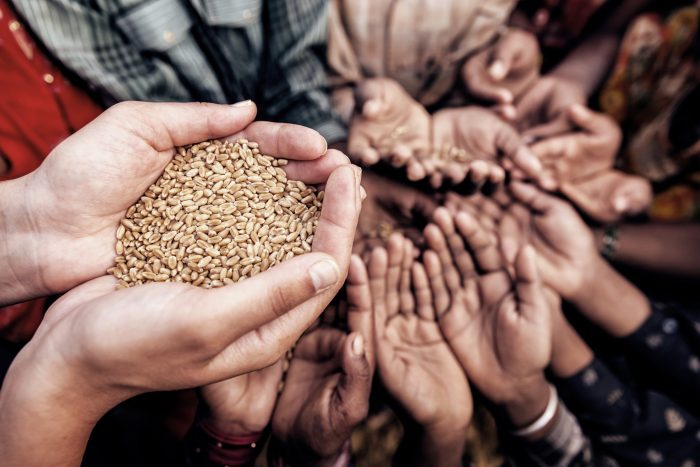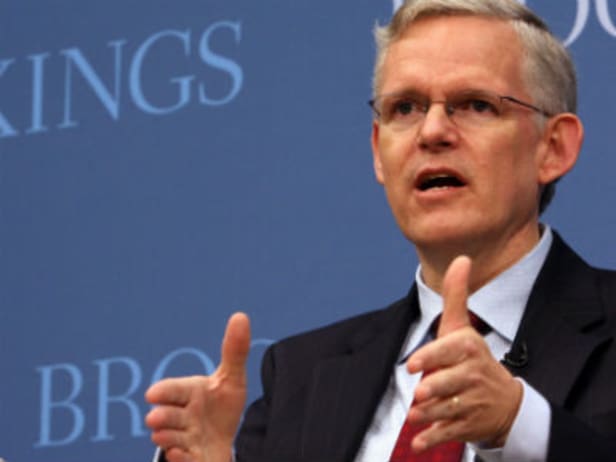First-Ever U.S. Coalition Unites Americans Against Hunger

In 2017, no child has to die of hunger. We have the means to stop this [famine] if we have the resources and the will to do so. Americans have always responded in the face of a crisis and we know they will be generous in helping the children and families we can reach to survive this crisis too. — Carolyn Miles, president & CEO, Save the Children
The UN defines famine using the following criteria:
- At least 20% of households in an area face extreme food shortages with limited ability to cope;
- Acute malnutrition rates exceed 30%; and,
- Mortality rate exceeds two persons per day per 10,000 persons.
Current famine and near famine situations exist in South Sudan, Yemen, Somalia, and northern Nigeria. There are more than 20 million people facing the threat of starvation and famine. Nearly 1.4 million children are severely malnourished and are at risk of death without immediate help.

Despite desperate pleas from nongovernmental organizations and the four countries themselves, the crisis has done little to capture public attention. Graham Craft, director of corporate and foundation partnerships at Mercy Corps elaborates:
“Despite its scope and urgency, the crisis has thus far received little media attention in America, therefore failing to register with the U.S. public.”
Thankfully, the Global Emergency Response Coalition is working to bring this crisis to the forefront of the public’s mind. Formed in April 2017, the Global Emergency Response Coalition is a lifesaving humanitarian alliance made up of eight of the world’s largest U.S.-based international aid organizations, whose unified goal is to work collectively to deliver relief to millions of children and families in need. CARE, International Medical Corps, International Rescue Committee, Mercy Corps, Oxfam, Plan International, Save the Children, and World Vision are working to collectively raise funds to respond to this unprecedented hunger crisis.
This coalition has long been planned for by the leaders of the eight coalition members. The desire is to develop a collaborative fundraising mechanism, similar to the Disasters Emergency Committee in the UK, that focuses public attention and awareness on the greatest crises at hand. Sam Worthington, CEO of InterAction said,
“It is important that major humanitarian nonprofits test a joint appeal and find ways to elevate public attention to these crises. We are experiencing the largest humanitarian disruption since the founding of the UN – at a time that the world is not paying attention. We need new ways to capture efficiencies, to market and to get a public that is distracted by other things to pay attention and support these crises. A joint appeal test is a good way to try that out. If the test is successful, then there will be a broader conversation on how to make the group more inclusive ultimately determining its long-term viability in the United States.”
Craft adds to Worthington’s sentiments on the pilot approach stating,
“By combining our efforts into a joint, two-week appeal, members of the coalition hope to amplify the urgency of need and break through the crowded news cycle we’ve all been up against individually. We believe we can be stronger together, and when we look back on this time, we must be confident that we did everything in our power to stop this catastrophe.”
In an effort to fully understand the scope of the Coalition, I contacted Nancy Aossey, president and CEO of the International Medical Corps. Specifically, I was interested in learning more about the timing of the joint appeal. Without hesitating she emailed me back saying –
“This is the worst humanitarian crisis in the world. The worst in over 70 years.” She went on to say “We wanted to marshal our forces to get the word out and unleash the power of individual giving to stop the suffering. For the first time, the eight largest humanitarian US based organizations came together to form the GERC to fight this crisis, mirroring the work we do on the ground to work together to raise awareness and funds.”
My ask out of this blog is simple – pay attention to the food insecurity and famine situation across South Sudan, Somalia, Yemen and northern Nigeria. And, then monetize that attention through a donation to the Global Emergency Response Coalition. In my conversation with Aossey, she agreed wholeheartedly with me on this and added her voice saying,
“This emergency is on such a scale that those of us who are on the frontlines, treating the sick and the dying, realized we had to take unprecedented action. People are dying as we speak, and time is truly of the essence. So we all have to step up and do more. Americans are the most generous nation, and we have a history of leading when crisis occurs. We are asking Americans to do their part, in the hopes that others will follow.”
If you would like to learn more about the coalition, please feel free to visit the Global Emergency Response Coalition or contact me directly for more information.
More like this

How to Fund Food Crisis Before It’s Too Late

